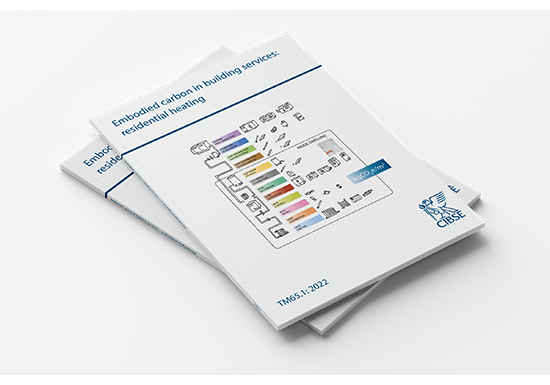New CIBSE Guide on Embodied Carbon in Residential Heating Systems

Research shows that embodied carbon in heating and hot-water systems accounts for up to 25% of a dwelling’s total embodied carbon.
Building on the work of TM65, published in January 2021, the Chartered Institution of Building Services Engineers (CIBSE) and Elementa Consulting present their most recent research study, Technical Memorandum 65.1: Embodied carbon in building services: residential heating. The guide will enable building services engineers to understand the impact of the systems they design and the products they specify.
As homes become increasingly energy efficient, the embodied carbon in the materials and products used for their space heating and hot water systems becomes a significantly higher proportion of their total lifetime impacts.
TM65.1 is focused on the embodied carbon of space heating and hot water products for typical systems in highly insulated new-build homes, specifically a notional new-build three-bedroom terraced home and a two-bedroom apartment in a multi-unit residential development. In total, the embodied carbon in 30 product types and for 13 different design strategies are presented for residential developments at different scales.
Embodied carbon is defined as all of the carbon emitted in the energy used to extract and transport raw materials, emissions from the manufacturing process and emissions from deconstruction and disposal of systems at the end of their life, including any transport associated with this. TM65.1 provides engineers with visibility of the embodied carbon in equipment used, the impact of different designs and recommendations on how engineers can consider and reduce embodied carbon when designing residential heating and hot water systems at an early design stage.
The focus on residential heating in TM65.1 will complement CIBSE TM65 Embodied carbon in building services: A calculation methodology, which was published in January 2021. TM65 is a toolkit to enable engineers to calculate the embodied carbon associated with all mechanical, electrical and public health products in all building types.
Anastasia Mylona, head of research at CIBSE, sees TM65.1 as an important addition to CIBSE’s growing range of publications.
“TM65.1 will help engineers working on residential heating systems to identify alternative options for those elements that are heavily carbon intensive”.
The research for TM65.1 was conducted and part-funded by Elementa Consulting, sponsored by CIBSE. The document is authored by Elementa’s Louise Hamot, Global Lead of Life Cycle Research; Clara Bagenal George, Associate; Yara Machnouk, Environmental Design Engineer; and Hugh Dugdale, Associate Principal.
This incredible milestone for the industry was made possible thanks to the help of many manufacturers who shared information about their products.
Lead author, Elementa’s Louise Hamot said:
“The spaces in which we live, and now often work, are as impactful on our planet as they are to our wellbeing. We must tackle carbon emissions at every level, both operational and embodied, when constructing and developing the spaces that will shape our future and support our fight against climate change”.
Click here for TM65.1
Want to hear more about TM65.1 from the authors themselves?
Click here to view the CIBSE #GrowYourKnowledge webinar and transcript.
